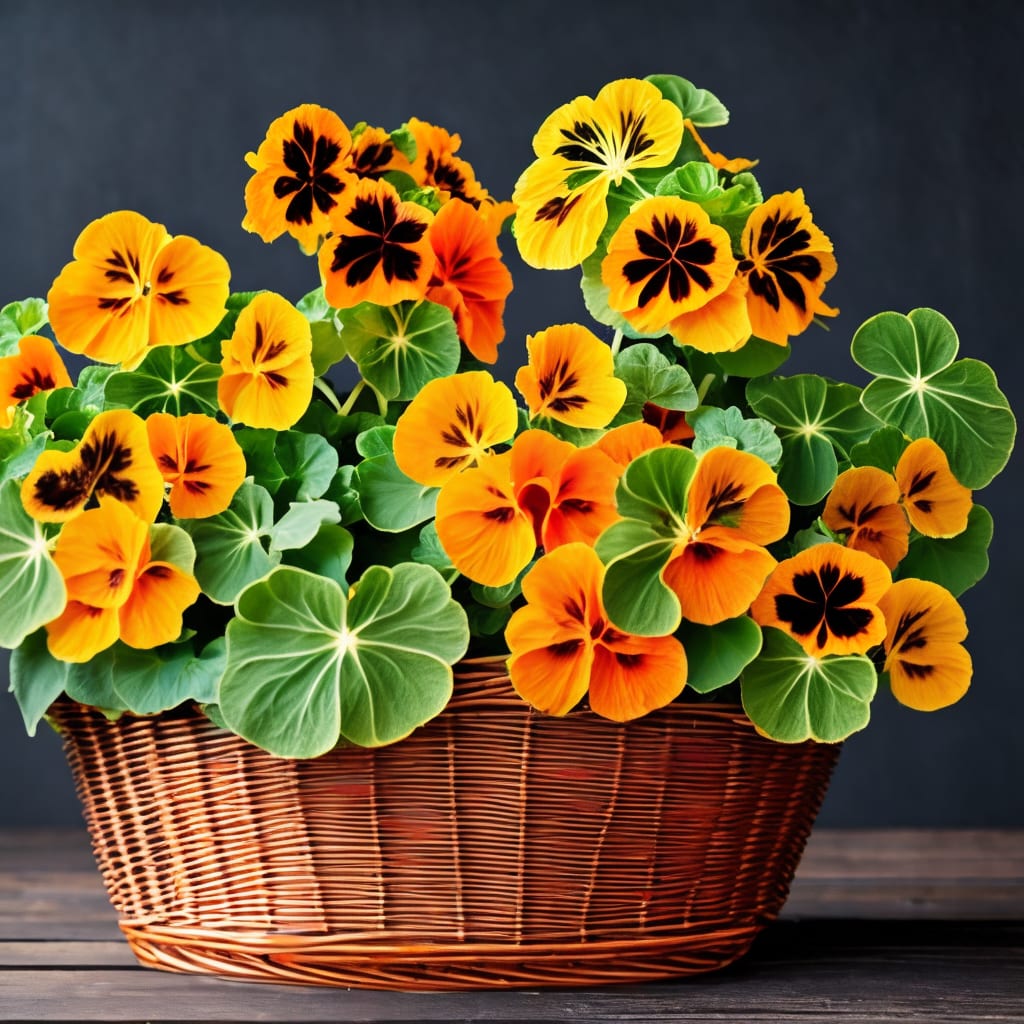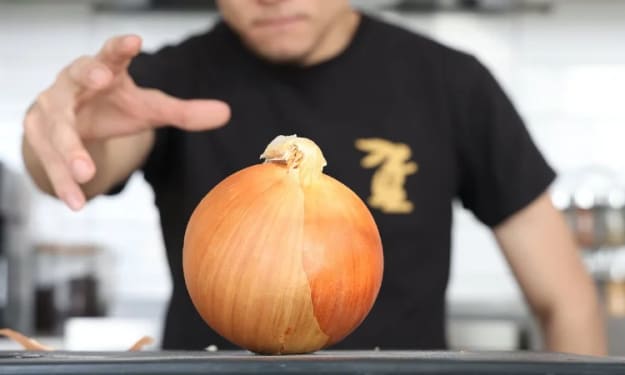
Section 1: Introduction
Nasturtiums, with their vibrant flowers and peppery leaves, are not just a visually stunning addition to your backyard garden, but also a versatile plant with a range of culinary and health benefits. In this article, we will explore the nutritional values, health benefits, culinary versatility, and global presence of Nasturtiums, shedding light on why they are a delightful addition to any garden and kitchen.
Section 2: Nutritional Values and Health Benefits
Nasturtiums not only bring beauty and flavor to your garden and kitchen but also offer a plethora of nutritional values and health benefits. Let's dive into the impressive array of nutrients packed within these vibrant plants and discover how they can contribute to your overall well-being.
Nasturtiums are a rich source of vitamins and minerals. They contain high levels of vitamin C, which is known for its immune-boosting properties and its role in collagen production for healthy skin and tissues. Nasturtiums also provide vitamin A, essential for maintaining good vision, promoting healthy skin, and supporting the immune system.
In addition to vitamins, Nasturtiums offer valuable minerals such as iron, magnesium, and potassium. Iron is crucial for maintaining healthy blood and preventing anemia, while magnesium plays a role in various bodily functions, including nerve function and muscle relaxation. Potassium is important for regulating blood pressure, maintaining heart health, and supporting proper hydration.
One of the standout features of Nasturtiums is their abundance of antioxidants. These powerful compounds help protect our cells from damage caused by harmful free radicals, reducing the risk of chronic diseases and promoting overall health. Nasturtiums are particularly rich in lutein and zeaxanthin, two antioxidants known for their role in maintaining eye health and reducing the risk of age-related macular degeneration.
Moreover, Nasturtiums possess antimicrobial properties, which can help fight against harmful bacteria and fungi. This natural defense mechanism contributes to the plant's resistance to pests and diseases, and it may also have benefits for human health. Some studies suggest that the compounds found in Nasturtiums, such as glucosinolates and isothiocyanates, have antimicrobial and antibacterial effects, supporting a healthy immune system.
Nasturtiums are also known for their potential diuretic properties, promoting healthy kidney function and supporting the body's natural detoxification processes. This diuretic effect can help flush out toxins and excess fluids from the body, aiding in maintaining a healthy fluid balance.
It's important to note that while Nasturtiums offer several nutritional benefits, they should be consumed in moderation as part of a balanced diet. The leaves and flowers can be eaten raw or cooked, and they add a distinct peppery flavor to dishes. Incorporating Nasturtiums into salads, sandwiches, and pasta dishes can enhance both the taste and visual appeal of your meals.
Nasturtiums are not only a feast for the eyes but also a nutritional powerhouse. Packed with vitamins, minerals, antioxidants, and potential health benefits, these vibrant plants offer a flavorful and healthful addition to your diet.
Section 3: Culinary Versatility
Nasturtiums, with their vibrant flowers and peppery leaves, offer a unique and exciting culinary experience. Their versatility in the kitchen extends beyond mere garnishing, as they can be incorporated into a wide range of dishes to add flavor, color, and a touch of culinary creativity. Let's explore the culinary versatility of Nasturtiums and discover the exciting ways you can incorporate them into your culinary adventures.
The vibrant flowers of Nasturtiums are not only visually stunning but also edible, making them a perfect addition to salads, appetizers, and main courses. Their bold colors and delicate petals bring an artistic touch to any dish, instantly elevating its presentation. Simply use the flowers as a garnish, or get creative by stuffing them with savory fillings for an impressive and eye-catching hors d'oeuvre.
But Nasturtiums aren't just about the flowers. The leaves of these plants also pack a flavorful punch. They have a distinct peppery taste, similar to watercress or arugula, which adds a zesty kick to salads and sandwiches. Consider using Nasturtium leaves as a substitute for traditional salad greens or layer them in a sandwich to introduce a refreshing and spicy element.
One of the most exciting culinary uses of Nasturtiums is incorporating them into spreads and dips. By blending the leaves with ingredients such as cream cheese, Greek yogurt, or avocado, you can create unique and flavorful spreads that can be enjoyed with crackers, bread, or vegetable sticks. The peppery flavor of Nasturtiums adds a delightful twist to these creamy concoctions.
For those who love experimenting in the kitchen, Nasturtium buds can be pickled and used as a condiment or flavor enhancer. Pickled Nasturtium buds have a tangy and slightly spicy taste that pairs well with meats, cheeses, and even cocktails. Use them to add a pop of flavor and texture to charcuterie boards or to elevate your favorite cocktail with a unique twist.
Don't forget about the seeds of Nasturtiums, as they can be harvested and used as a substitute for capers. The seeds have a similar briny and peppery flavor, making them a great addition to sauces, dressings, or as a topping for fish dishes. Harvesting the seeds at the end of the growing season allows you to enjoy the full culinary potential of these versatile plants.
Incorporating Nasturtiums into your culinary repertoire not only adds a burst of flavor but also showcases your creativity and adventurous spirit in the kitchen. From visually stunning garnishes to zesty spreads and unique pickles, Nasturtiums offer endless possibilities to elevate your dishes and impress your guests.
Section 4: World of Cuisine
Nasturtiums have traveled the world, making their mark on diverse cuisines and capturing the palates of culinary enthusiasts across different cultures. Let's embark on a culinary journey to explore the global presence of Nasturtiums and discover how they have become an integral part of various culinary traditions.
Mediterranean Cuisine:
In Mediterranean cuisine, Nasturtiums have found a special place on the culinary stage. The peppery flavor of Nasturtium leaves and the vibrant colors of their flowers perfectly complement the fresh and bold flavors of the Mediterranean region. In countries like Italy, Greece, and Spain, Nasturtiums are often used as a beautiful garnish for salads, pasta dishes, and risottos. The flowers add a pop of color and a hint of spice, enhancing the visual appeal and taste of these classic Mediterranean dishes.
South American Cuisine:
Nasturtiums have also made their way into South American culinary traditions, particularly in Peru. In traditional Peruvian cuisine, Nasturtium flowers and leaves are commonly used in a variety of dishes. One popular dish is "causa," a layered potato dish that incorporates Nasturtium leaves for added flavor and visual appeal. Additionally, Nasturtium flowers are used as a garnish in ceviche, a traditional Peruvian dish of marinated raw fish or seafood. The bright colors and peppery taste of Nasturtiums elevate the flavors and aesthetics of these beloved South American dishes.
Asian Cuisine:
In Asian cuisine, Nasturtiums have found their way into a variety of dishes, particularly in Chinese and Indian cooking. In Chinese cuisine, the peppery leaves of Nasturtiums are often stir-fried or added to soups, imparting a unique flavor to these dishes. The leaves can also be used as a wrapper for steamed fillings, infusing the contents with their distinctive taste. In Indian cuisine, Nasturtium leaves are known as "Gongura" and are used in traditional curries and chutneys, providing a tangy and peppery element to the flavors of the subcontinent.
Global Garnish:
Beyond specific cuisines, Nasturtiums have gained popularity as a global garnish. Chefs and home cooks alike appreciate the aesthetic appeal and spicy flavor that Nasturtium flowers bring to a dish. These vibrant blooms can be found adorning plates in upscale restaurants, adding a touch of elegance and playfulness to culinary creations. From fancy appetizers to decadent desserts, Nasturtium flowers have become a symbol of creativity and innovation in the world of cuisine.
The global presence of Nasturtiums in various culinary traditions highlights their adaptability and ability to enhance a wide range of flavors and dishes. Whether used as a subtle garnish or a prominent ingredient, Nasturtiums bring a unique and refreshing dimension to the culinary world.
So, as you embark on your culinary adventures, consider incorporating Nasturtiums into your recipes, drawing inspiration from the diverse cuisines that have embraced these vibrant plants. Let the peppery taste and vibrant colors of Nasturtiums transport your taste buds to different corners of the world, adding a touch of global flair to your dining experience.
Section 5: Conclusion
In conclusion, Nasturtiums are not only visually captivating backyard plants but also a valuable addition to the kitchen. From their nutritional benefits to their culinary versatility, Nasturtiums offer a delightful experience for both the taste buds and the eyes. So, why not consider growing these vibrant plants in your garden and explore the various ways they can be incorporated into your culinary adventures?





Comments
Pabalatak is not accepting comments at the moment
Want to show your support? Send them a one-off tip.